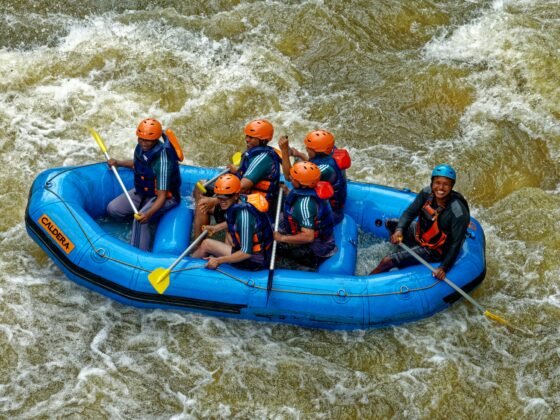
A sleeping bag is potentially the most important gear in any backpacker’s pack. A sleepless night does not only ruin a trip, but it can make your entire day unbearable. While campers have a bit more freedom when choosing a sleeping bag, backpackers have specific priorities.
So, what is more important when shopping for a backpacking sleeping bag? Weight? Insulation? Comfort? Let’s find out what types of sleeping bags are best.
Things to Consider When Choosing a Backpacking Sleeping Bag
Once you become serious about your outdoor trips, your priority changes from ultimate comfort to top-notch protection. There are countless factors to examine when comparing sleeping bags for backpacking. But here’s the rundown of the basics.
Temperature Rating
The temperature rating refers to the lowest possible temperature that the bag can keep a typical backpacker warm. When choosing a sleeping bag, it is ideal to choose one that has a lower temperature rating than your expected weather conditions. This also makes the sleeping bag versatile as you can open it up when it is relatively warm.
When comparing sleeping bags in the store, you’ll immediately notice different terms and acronyms. This can get confusing and complex as you continue shopping. However, the basics of temperature rating are as follows:
- Bags are assigned either an ISO or EN temperature rating. EN is the old standard, while ISO is the new one. The latter provides more consistent test results. But, these two are relatively comparable. As such, when you see two bags using ISO or EN, you can safely compare the performance of the two.
- Typically, a bag has a limit rating and a comfort rating. The limit rating indicates the lowest temperature that the bag can keep a “warm sleeper” protected. You can typically see this in unisex or men’s gear. On the other hand, comfort rating refers to the lowest temperature that a bag can keep a “cold sleeper” warm. This is mostly found in women’s sleeping bags.
- If a bag’s rating is without the comfort or limit rating labels, then it is likely that the temperature rating is the company’s estimate. As such, it does not follow EN or ISO standards.
- Due to differences in design, materials used, and overall construction, the temperature rating is not a complete guarantee of the sleeping bag’s performance. However, it provides a general guide so you can compare bags even from different brands.
Sleeping Bag Insulation
More than the temperature rating, you should also take note of the sleeping bag’s insulation: down or synthetic.
Down is a popular choice among backpackers due to its lightweight qualities. It is also more compressible, which makes down sleeping bags easy to pack. If maintained properly, down can last even for decades. Also, it is more durable than synthetic insulation. Those who go on extreme adventures prefer down insulation with high fill power (about 800-fill) as they are ultralight and can withstand low temperatures.
However, down is also quite expensive due to its limited supply. Furthermore, it loses some of its ability to repel heat when wet. New sleeping bag models come with water-resistant down insulation to resolve this issue.
On the other hand, typical backpackers opt for synthetic insulation as it offers solid performance at a reasonable price. Bags with such insulation are easy to dry. They also do not lose their insulation when wet. As such, they are popular among hikers who are expecting damp climates. In contrast to down, synthetic insulation does not have a standard fill power indicator, so you need to refer to their temperature ratings.
Sleeping Bag Weight
As mentioned, weight is a crucial factor in backpacking. After all, you will be carrying your entire pack on your back for an extended period of time. Note that a lower temperature rating means more insulation in the bag. As such, compare the weight of sleeping bags with the same temperature rating.
Just like any gear, there’s no one-size-fits-all here. When selecting sleeping bags for backpacking, you can safely start at 40 oz. From there, adjust according to the temperature rating, prices, and overall shape of the bag.
Speaking of bag shape, here are three of the most common shapes and how they affect weight:
- Rectangular – Mostly found in camping sleeping bags. These maximize comfort but sacrifice weight as they use more materials.
- Semi Rectangular – Also known as a barrel or modified mummy, this shape balances roominess and warmth. They typically come with a hood that helps keep the heat in.
- Mummy – This shape reduces weight as it uses fewer materials. The slim cut and contoured hood ensure greater warmth.
Conclusion
Temperature rating, weight, and insulation are just the basics of choosing a backpacking sleeping bag. Ultimately, you want to consider your entire sleeping system, which includes a sleeping pad and your clothing in addition to your sleeping bag. Your tent can also help you choose the right bag as it offers protection from the elements as well.












